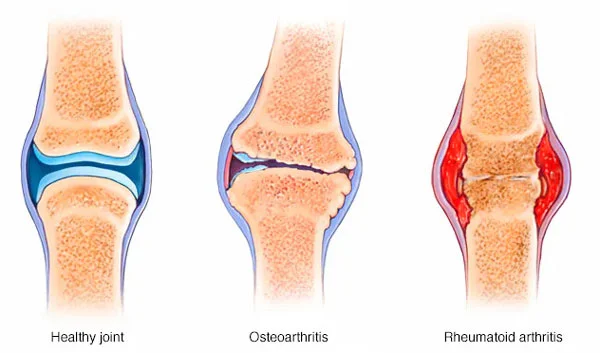Some text in the modal.

Sports injuries are common and can occur throughout your body to bones, muscles, tendons, ligaments and other structures. You can treat many minor injuries at home with rest, ice, compression, elevation and over-the-counter pain medications. But some injuries require medical treatment, such as immobilization, physical therapy and surgery.

The complications of poor posture include back pain, spinal dysfunction, joint degeneration, rounded shoulders and a potbelly. Suggestions to improve your posture include regular excercise and stretching.

A Bone fracture is a break in the continuity of a bone. A significant percentage of bone fractures occur because of high force impact or stress. However, a fracture may also be the result of some medical conditions that weaken the bones.

Arthritis is the swelling and tenderness of one or more joints. The main symptoms of arthritis are joint pain and stiffness, which typically worsen with age. The most common type of arthritis are osteoarthritis and rheumatoid arthritis.

A 'slipped' (prolapsed) disc often causes sudden, severe lower back pain. The disc often presses on a nerve root which can cause pain and other symptoms in a leg. In most cases, the symptoms ease off gradually over several weeks. The usual advice is to cary on as normal as much as possible. Painkillers may help. Physical treatments such as spinal manipulationmay also help.

Spondylosis is a form of lower back pain and is an important clinical, social, economic and public health problem affecting the world wide population. Can be seen as a cascaden of anatomical changes of the spine which lead to more degeneration and change in other spine structures.

Neck pain can last from days to years, depending on the cause. Common causes include osteoarthritis, spinal stenosis, herniated disc, pinched nerve, mental and physical stress and strain, poor posture, tumors and other health conditions.

Osteoporosis causes bones to become weak and brittle - so brittle that a fall or ever mild stresses such as bending over or coughing can cause a fracture. Osteoporosis-related fractures most commonly occur in the hip, wrist, or spine. Bone is living tissue that is constantly being broken down and replaced. Osteoporosis occurs when the creation of new bone does n't keep up with the loss of old bone.

Sciatica refers to pain that travels along the path of the sciatic nerve. The sciatic nerve travels from the lower back through the hips and buttocks and down each leg.

An ischemic stroke occurs when the blood supply to part of the brain is interrupted or reduced, preventing brain tissue from getting oxygen and nutrients. Brain cell begin to die in minutes.

Tennis Elbow (lateral epicondylitis) is a painful condition that occurs when tendons in your elbow are
overloaded, usually by repetitive motions of the wrist and arm.
Despite its name, athletes aren't the only people who develop tennis elbow. People whose jobs feature
the types of motions that can lead to tennis elbow include plumbers, painters, carpenters and butchers.

A soft tissue injuriy is the damage of muscles, ligaments and tendons throughout the body. Common soft tissue injuries usually occur from a sprain, strain, a one-of blow resulting in a contusion or overuse of a particular part of the body. Soft tissue injuries can result in pain, swelling, bruising and loss of function.

Joint discomfort is common and usually felt in the hands, feet, hips, knees, or spine. Pain may be constant or it can come and go. Sometimes the joint can feel stiff, achy, or sore. Some patients complain of a burning, throbbing, or "grating" sensation. In addition, the joint may feel stiff in the morning but loosen up and feel better with movement and activity. However, too much activity could make the pain worse.

Cerebral palsy (CP) is a group of disorders that affect a person's ability to move and maintain balance and posture. CP is the most common motor disability in childhood. Cerebral means having to do with the brain. Palsy means weakness or problems with using the muscles.

A child's growth is more than just physical Children grow, develop and learn throughout their lives, starting at birth. We can find out about a child's development by how they interact with their environment, including how they play, learn, speak, move and behave.

